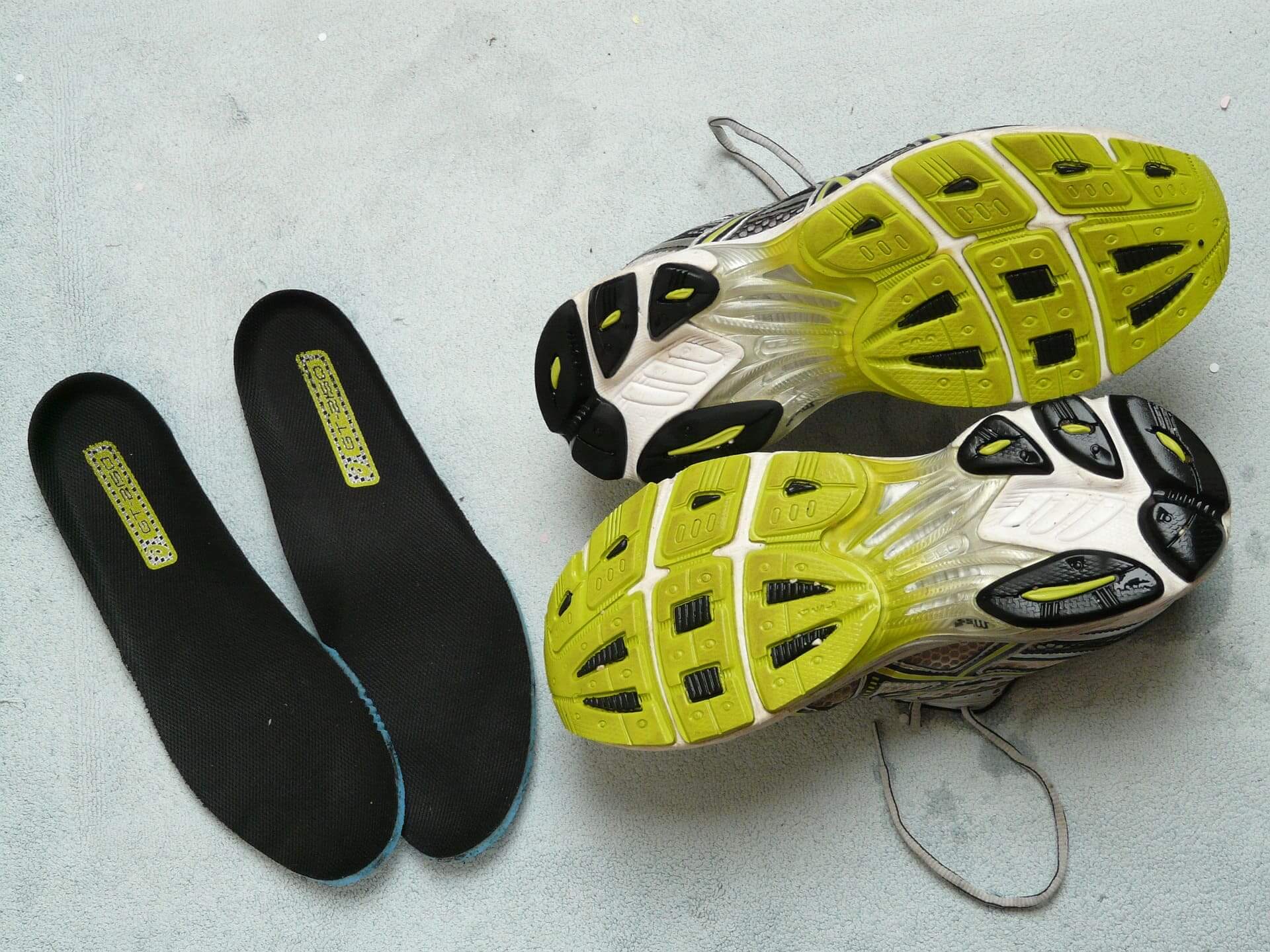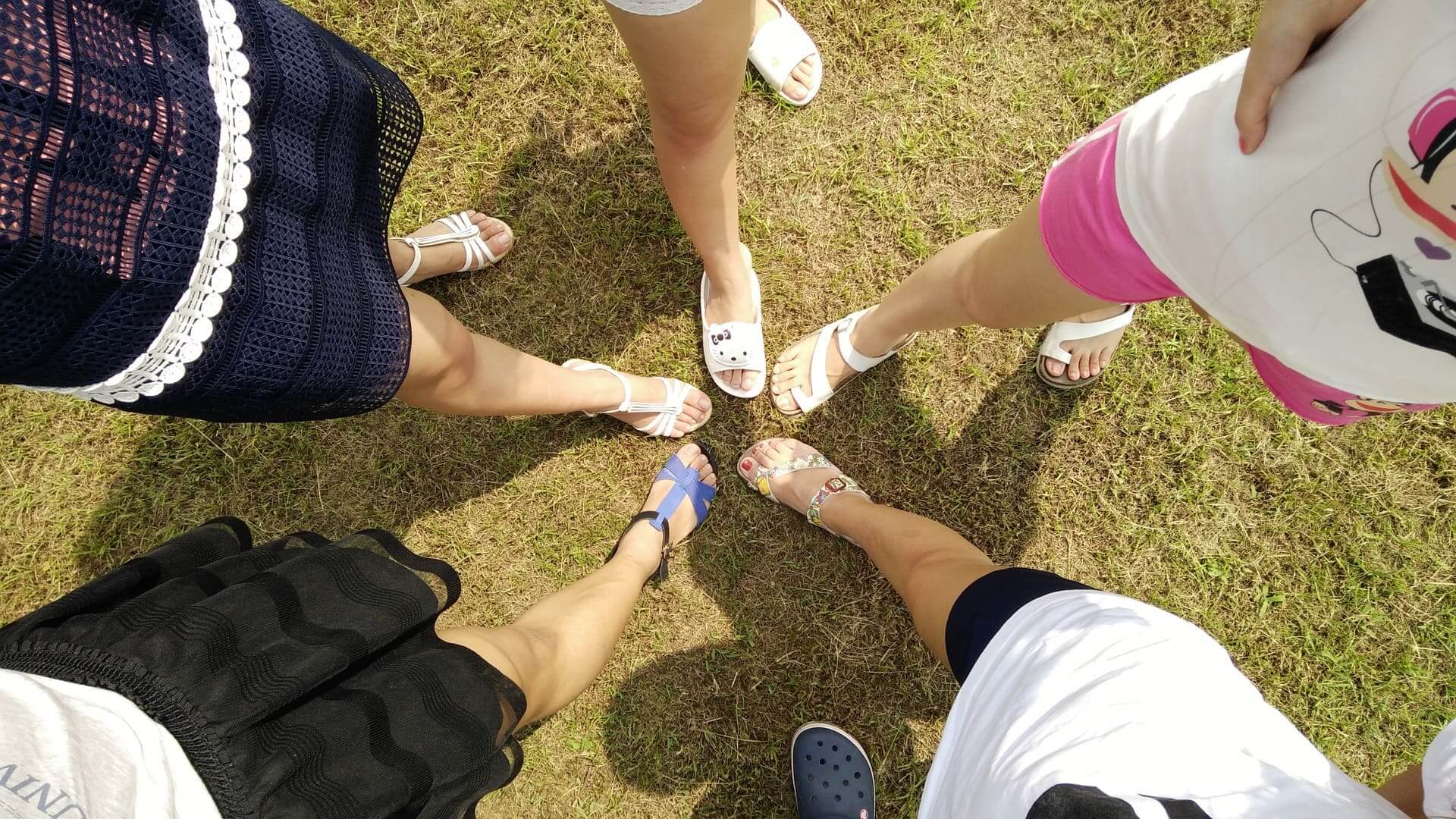After a year of laidback lockdown life, we’re ready to swap our joggers for skinny jeans and comfy slippers for the latest shoe trends. But how prepared are we for life after lockdown? And more importantly, how prepared are our feet?
At Deichmann, we’ve seen slipper sales increased by 300% over the last 12 months, which proves just how much our footwear focus has shifted to comfort over practicality.
With many slipper styles lacking structure and support, leading to a risk of ‘lockdown feet’, and benefitting from soft interiors, our feet are no longer primed to prevent shoes from rubbing when we’re on the move.
With life returning to normal, we all need to get our feet back in shape – and fast! From returning to the workplace, hitting the beer garden or just enjoying life after lockdown, we’ve got all the advice you need. Read on for tips on how to stop your shoes rubbing or how to break in your new shoes quickly.
- What are ‘lockdown feet’?
- How to prevent ‘lockdown feet’
- How to stop shoes rubbing
- How to stop sandals rubbing or slipping
- How to break in new shoes quickly
What are ‘lockdown feet’?
‘Lockdown feet’ is the name that’s been coined for a type of heel pain known as plantar fasciitis. The condition is caused by stretched ligaments and unsupported arches, resulting in inflammation and pain in the arch or heel.
Common causes include suddenly doing much more walking or running, or wearing shoes that do not provide support. Experts have warned that lockdown Brits who swapped their regular shoes for ill-fitting footwear with poor insoles and no support, such as slippers or flip flops, could face foot pain when going back to their normal shoes.
How to prevent ‘lockdown feet’
- Swap slippers for shoes with support
Structured shoes provide greater support for feet during movement. Lightweight trainers, footbed sandals, which have a structured insole, and leather footwear can provide the interior support that your feet need. Loose-fitting slippers in particular can cause issues if you strain to keep them on your feet while walking.
- Replace your insoles
Support is the key to keeping feet healthy and comfortable. Worn down or unsuitable insoles provide feet with little to no support, increasing the risk of plantar fasciitis. Invest in new insoles to ensure correct support and extra cushioning to the arch and heel.
- Stretch and exercise your feet
Relieve and reduce foot pain with this guide to stretching exercises from the Chartered Society of Physiotherapy.

How to stop shoes rubbing
Blisters and skin breaks caused by shoes rubbing are the quickest way to take the spring out of your step. Why does it happen? There are several reasons why your shoes might start to rub, even when you’ve had no previous issues.
It could be due to moisture, which softens skin and increases the risk of friction, or heat, which makes feet expand and affects the fit of your footwear.
Here are a number of solutions to stop your shoes from rubbing:
- Try before you buy
Wearing the right size and style of footwear for the shape of your feet is key to preventing shoes from rubbing, so always try before you buy.
Check for any pinching that may occur around the toes.
Check for friction around the back of the ankle, heel or toes as you move.
Loose shoes are more likely to rub, so find the right fit and don’t be tempted to size up – even if your size is out of stock! If you find yourself battling with loose shoes that are rubbing around the heel and back of the ankle, try a pair of heel grip pads to improve the fit and reduce movement.
At Deichmann, each product benefits from a size conversion chart so you can find the correct UK size and we have a foot measuring guide to help when buying kids’ shoes. Plus, we offer a free returns service in store or online to help you find the right fit.
- Keep feet dry
Moisture plays a key role in skin breaks and blisters, so protect your feet from external moisture by ensuring that your shoes are fully waterproof.
Suede, canvas and other textiles can let in rain and moisture, which may lead to damp socks, uncomfortable wet feet and increase the risk of rubbing.
If your footwear is not fully waterproof, use a moisture blocking spray to stop rain dampening your shoes and your step.
- Wear the right socks
The right socks are key to finding the right fit and preventing shoes rubbing your heel, ankle or toes. When trying on new shoes wear socks that provide cushioning and position them correctly at the heel to avoid them slipping down or twisting when walking.
Moisture wicking socks can help to keep feet dry and comfortable.
- Never buy new shoes in the morning
Feet naturally swell throughout the day, sometimes up to half a shoe size. This is important to keep in mind when buying new shoes, as the fit will differ depending on the time of day, and poor fitting shoes can cause discomfort. For a true fit, try shoes on in the afternoon.
- Gel pads
Whether you have an ill-fitting pair of shoes you’re not willing to give up or your shoes start to rub later in the day then invest in some gel pads to take the pressure off. These soft gel mini pads are ideal for popping in your bag for when you need them most.
- Check for interior seams
The smoother the interior of your shoe, the kind it will be on your feet. Look for seams, stitching and other features that may increase the risk of rubbing.

How to stop sandals rubbing or slipping
We’ve provided some handy tips to stop your shoes rubbing, but how can you stop your sandals from rubbing or slipping without resorting to the dreaded socks and sandals combo – or unsightly plasters?
- Talcum powder
Preventing moisture is key to reducing friction and preventing blisters, so rub feet with talcum powder to keep them dry.
- Hairspray
If you want to stop your flip flops, mules or strappy sandals from slipping on the move simply spray the soles of your feet with hairspray. Once it becomes tacky, slide into your sandals and go.
- Line your sandals
Treat your feet to a pair of gel toe pads, which are designed for use with toe post sandals and flip flops to prevent between toe blisters. They help to prevent your sandals rubbing or slipping on the move.
Alternatively, use the following prep work to break your sandals in before you step outside.
How to break in new shoes quickly
New shoes are often the worst offenders when it comes to rubbing and causing painful blisters. Leather, canvas and other materials are often stiff during the first few wears, so they will need breaking in to make them more supple and more comfortable.
- Wear shoes around the house
Swap your slippers for your new shoes and tackle your chores to help loosen up your new shoes. Gradually build up the time you spend wearing them to reduce the risk of blisters or discomfort.
- Wear two pairs of socks
Break in your new shoes quickly by wearing two pairs of socks. This tactic is a popular one with walkers, as friction occurs between the socks, rather than directly with the foot, which helps to prevent blisters.
- Hairdryer
Pop your new shoes on and flex feet while giving them a quick blast on a low heat setting. Warming shoes will loosen the materials around the movement of your feet, speeding up the breaking in process.
- Shoe stretchers
If your shoes are tight and you want a quick fix without putting in the hard work then invest in a pair of shoe stretchers. These will stretch your shoes overnight, reducing the time you need to spend wearing them in.
Discover new shoes for spring and summer
Now you’re armed with all the tips you need to keep your feet feel good on the move, get ready for spring and summer by shopping women’s sandals or beach shoes and men’s sandals.


